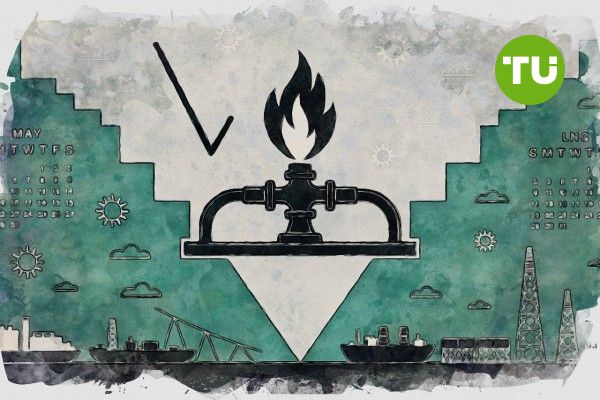Natural gas price climbs above $3.50 on output drop and record LNG exports
 Natural gas rebounds to $3.567 as falling production and strong exports support bullish trend
Natural gas rebounds to $3.567 as falling production and strong exports support bullish trend
U.S. natural gas futures rose to $3.567 per million British thermal units (MMBtu) on Wednesday, recovering from back-to-back losses as traders responded to falling production and historic levels of liquefied natural gas (LNG) exports. The rebound follows news that output is on track to drop by 4.8 billion cubic feet per day (bcfd) to 102.6 bcfd, marking a seven-week low. April’s LNG export average hit a record 16 bcfd, reaffirming the U.S. position as the world’s top LNG supplier despite soft domestic demand.
Weather remains a critical factor in shaping price direction. Meteorologists forecast warmer-than-normal temperatures across the Lower 48 states through May 21, which could dampen heating and cooling demand. Still, mild spring conditions and high output levels are expected to support record gas injections into storage, potentially slowing bullish momentum.
The most recent EIA report showed a 107 billion cubic foot (bcf) build in natural gas storage for the week ended April 25—well above the five-year average of 58 bcf and last year’s 64 bcf. Even so, inventories remain near seasonal norms, providing some cushion against volatility.
Natural gas price dynamics (November 2024 - May 2025) Source: TradingView.)
Technical outlook: Natural gas holds trend above key support
Technically, natural gas is trading above its 50-day exponential moving average at $3.471, a level that continues to reinforce the uptrend. Immediate support is seen at $3.452, which aligns with a rising trendline that has consistently underpinned recent gains.
On the upside, the key resistance to watch is $3.721. A breakout above this level could trigger a move toward $3.864 as bullish momentum builds. However, any drop below $3.452 would undermine the current recovery and expose the market to a deeper retracement toward $3.310.
Natural gas forecast: Outlook hinges on weather and supply dynamics
Looking ahead, the price trajectory will be shaped by a tug-of-war between declining production and strong LNG demand versus increasing storage injections. Weather conditions and resistance levels around $3.721 remain crucial triggers for the next move.
As discussed in previous coverage, the natural gas market had been at risk of a pullback amid weak domestic usage and rising inventories. However, the current bounce above $3.50—fueled by tighter supply and firm export demand, suggests that the bullish structure remains viable unless $3.452 fails to hold.













































































































































